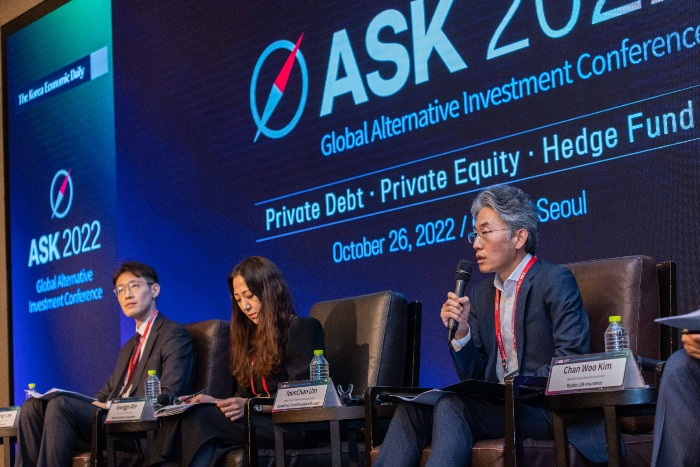ASK 2022
Korea Post's insurance arm uses buyout, senior debt as core strategies
Investors must have a critical eye in selecting GPs as one or two defaults in debt investment may affect the entire portfolio's results
By Oct 27, 2022 (Gmt+09:00)
2
Min read
Most Read
LG Chem to sell water filter business to Glenwood PE for $692 million


Kyobo Life poised to buy Japan’s SBI Group-owned savings bank


KT&G eyes overseas M&A after rejecting activist fund's offer


StockX in merger talks with Naver’s online reseller Kream


Mirae Asset to be named Korea Post’s core real estate fund operator



Korea Post’s insurance bureau will maintain its core-satellite strategy in private equity and debt investments for both stable revenue streams and high profitability, the bureau’s Deputy Director of Alternative Investment Division Um Yoon-Chan said at ASK 2022.
The insurance arm employs its core strategies, buyout and senior debt, every year and applies its satellite strategies, secondary, growth, venture and mezzanine, every three to four years.
Korea Post is South Korea’s postal services agency. The insurance arm manages around 60 trillion won ($42.3 billion) in assets including alternative investment making up 15% as of end-2021. Overseas private equity and debt amount to 1.3 trillion won and 700 billion won, respectively.
Focusing on developed countries in North America and Europe, the insurance bureau invests in commingled funds, special memorandum accounts (SMAs) and others via Korean asset managers. Its minimum ticket size is $100 million.
One of its recent major changes is that it started using requests for information (RFIs) in hiring global GPs during COVID-19, Um said. It has saved a lot of time and money as its Korean asset managers suggest shortlisted global GPs via RFIs, while the request for proposal (RFP) it previously used follows an open bid system.
So far in 2022, the insurance bureau bet on buyouts and senior debts targeting North America-based firms via blind pool funds. It also made three co-investments, joint investments with general partners, including mezzanine debts. It seeks to expand exposure to senior debt strategies given current macroeconomic risks, Um said.
Although private debt shows robust performance in times of economic recession, PD investors are concerned about declining sales and default risks, Um said.
He said that investors should have a critical eye when selecting GPs as one or two defaults in debt investments may affect the entire portfolio's results. Accordingly, the insurance bureau is focusing on stable management of its private debt portfolio, he added.
In the GP selection, the insurance bureau has four criteria. The investment firm should manage diversification with recession-resistant industries and strong cash flow; have great skills in risk management and ability to cope with stressed market conditions; maintain some financial indices, such as leverage rates and loan-to-value (LTV) ratios, at appropriate levels; and employ an unleveraged strategy.
Write to Jihyun Kim at snowy@hankyung.com
Jennifer Nicholson-Breen edited this article.
More to Read
-
 Pension fundsKorea Post to tap two GPs for global PE secondaries
Pension fundsKorea Post to tap two GPs for global PE secondariesApr 07, 2022 (Gmt+09:00)
1 Min read -

-
 Pension fundsKorea Post to invest in overseas data centers and warehouses
Pension fundsKorea Post to invest in overseas data centers and warehousesFeb 07, 2022 (Gmt+09:00)
2 Min read -
 Pension fundsKorea Post to hire two GPs for global infrastructure debt
Pension fundsKorea Post to hire two GPs for global infrastructure debtApr 14, 2022 (Gmt+09:00)
2 Min read
Comment 0
LOG IN


